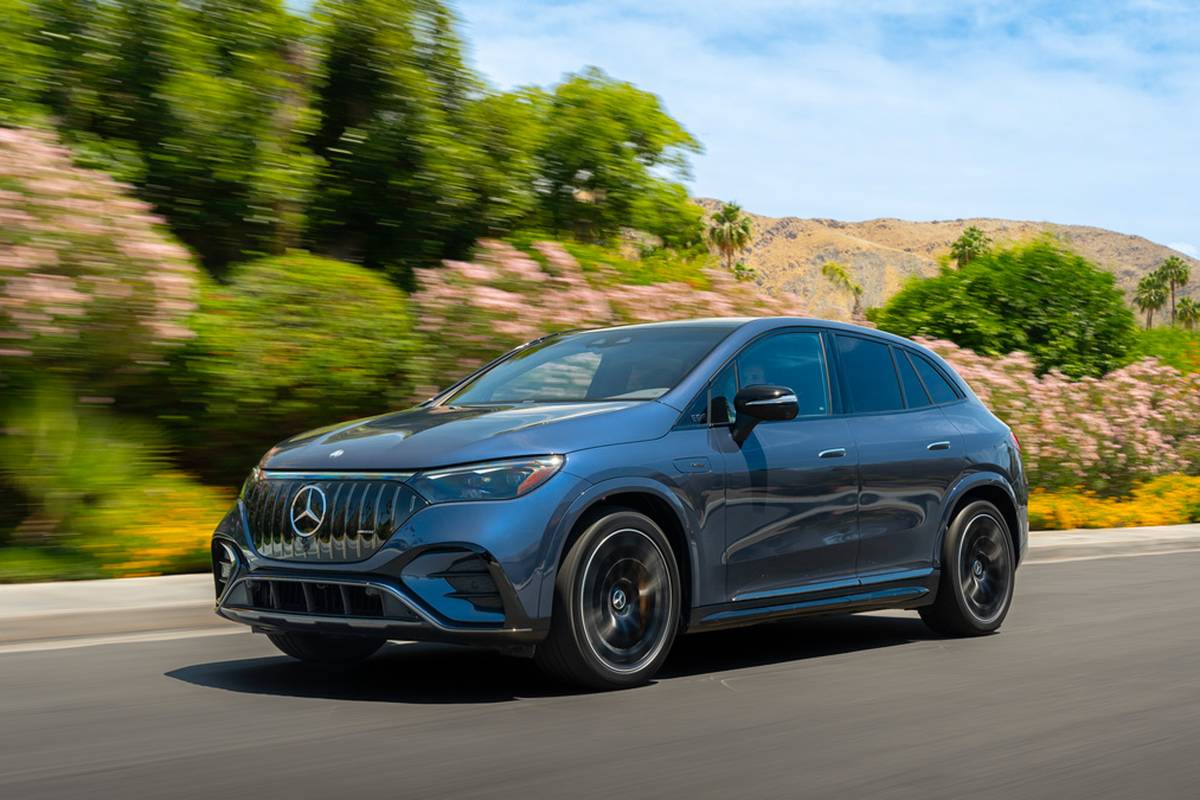2023 Volkswagen ID.4 Review: Still Getting There

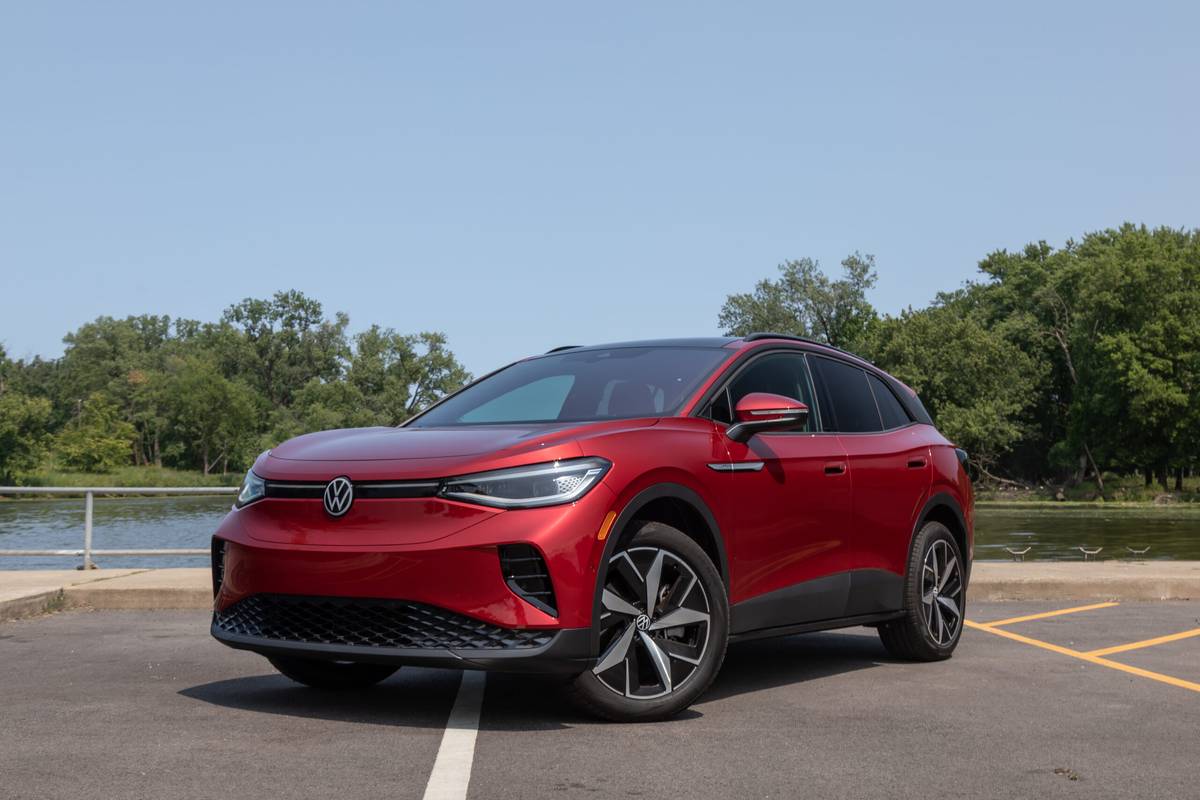
The verdict: The all-electric 2023 Volkswagen ID.4 has characteristic VW attributes, like a refined driving experience and well-built interior, but the automaker kept a good electric SUV from being great by going overboard with touch-sensitive controls.
Versus the competition: The dual-motor, all-wheel-drive ID.4 delivers good power, a comfortable ride, a spacious and configurable interior, and useful trip-planning technology that position it well against rivals.
It’s been a couple of years since we last reviewed the ID.4, and the competition has changed quite a bit since, with new electric vehicles entering the market. The ID.4 has changed, too, with a new, lower-priced version debuting for the 2023 model year and some significant changes coming for 2024 to go up against the likes of the Hyundai Ioniq 5, Nissan Ariya and Ford Mustang Mach-E.
Related: 2024 Volkswagen ID.4 Gets Power, Controls Update
Our test vehicle for this review was a Pro S trim level with all-wheel drive. Its dual-motor drivetrain is rated at 295 horsepower, and it has an EPA-estimated driving range of 255 miles on a full charge. Its as-tested price was $54,485, which included the destination charge but none of the state or federal incentives available for this vehicle, which include a federal tax credit of up to $7,500 for qualifying buyers.
How It Drives
The AWD Pro S trim comes with 20-inch wheels and tires, which is a setup that can result in an uncomfortable ride. The ID.4’s ride quality is livable but not always comfortable; you’ll sometimes feel a jolt in the cabin when traveling over a rough section of pavement. The SUV does manage to mostly avoid ride harshness, though, which is a testament to Volkswagen’s suspension tuning. The ID.4 rides considerably better than the brittle, busy Mustang Mach-E, but it’s slightly less comfortable than Hyundai’s Ioniq 5.
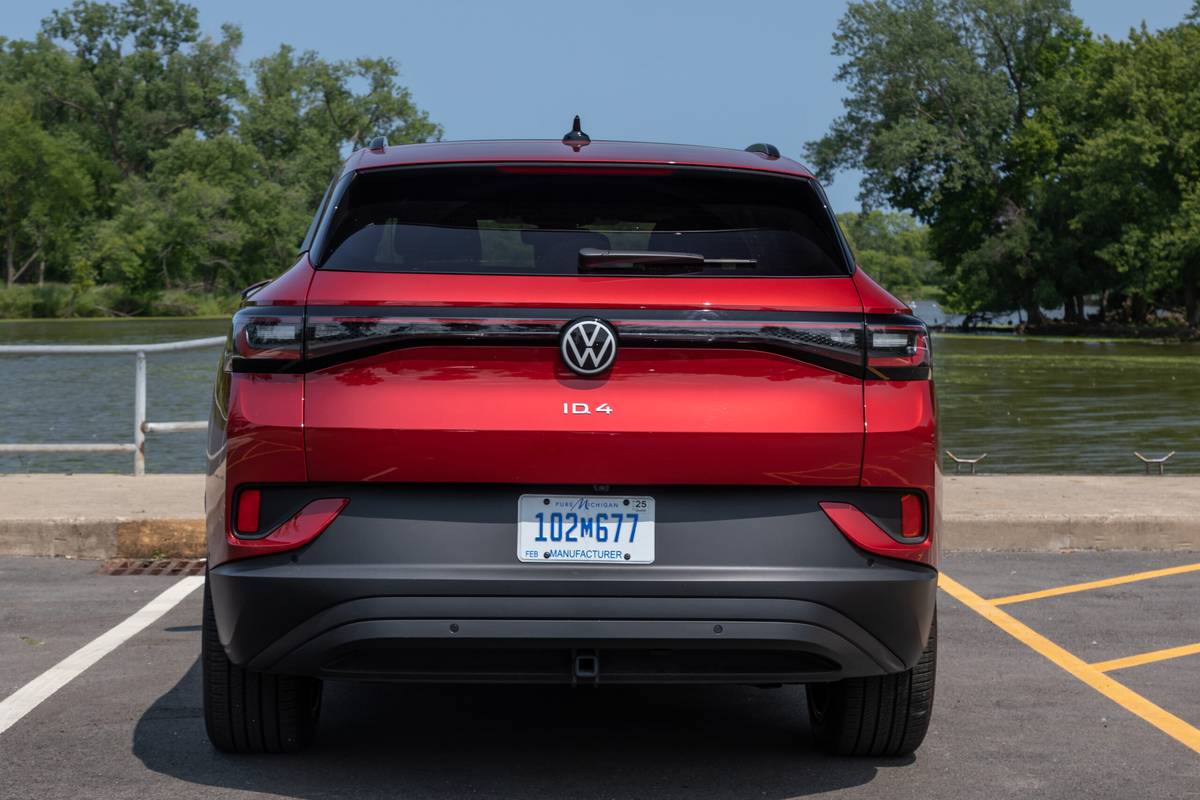
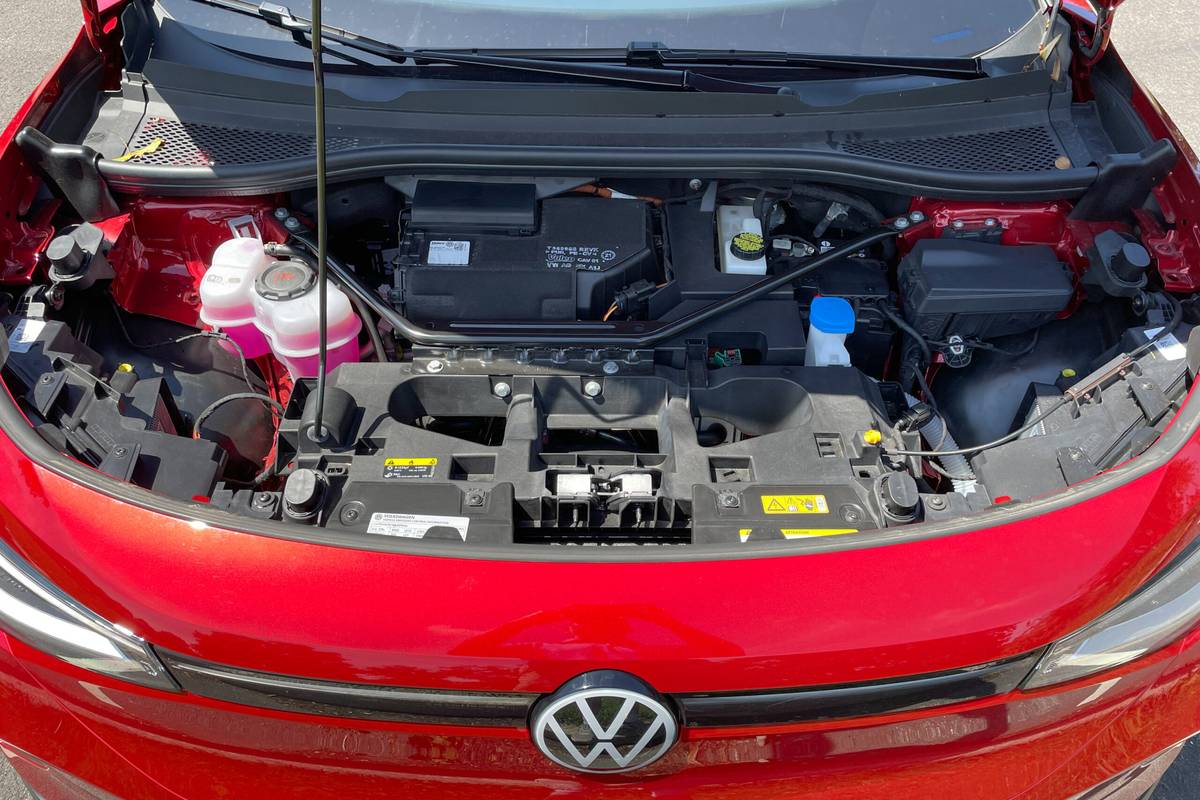
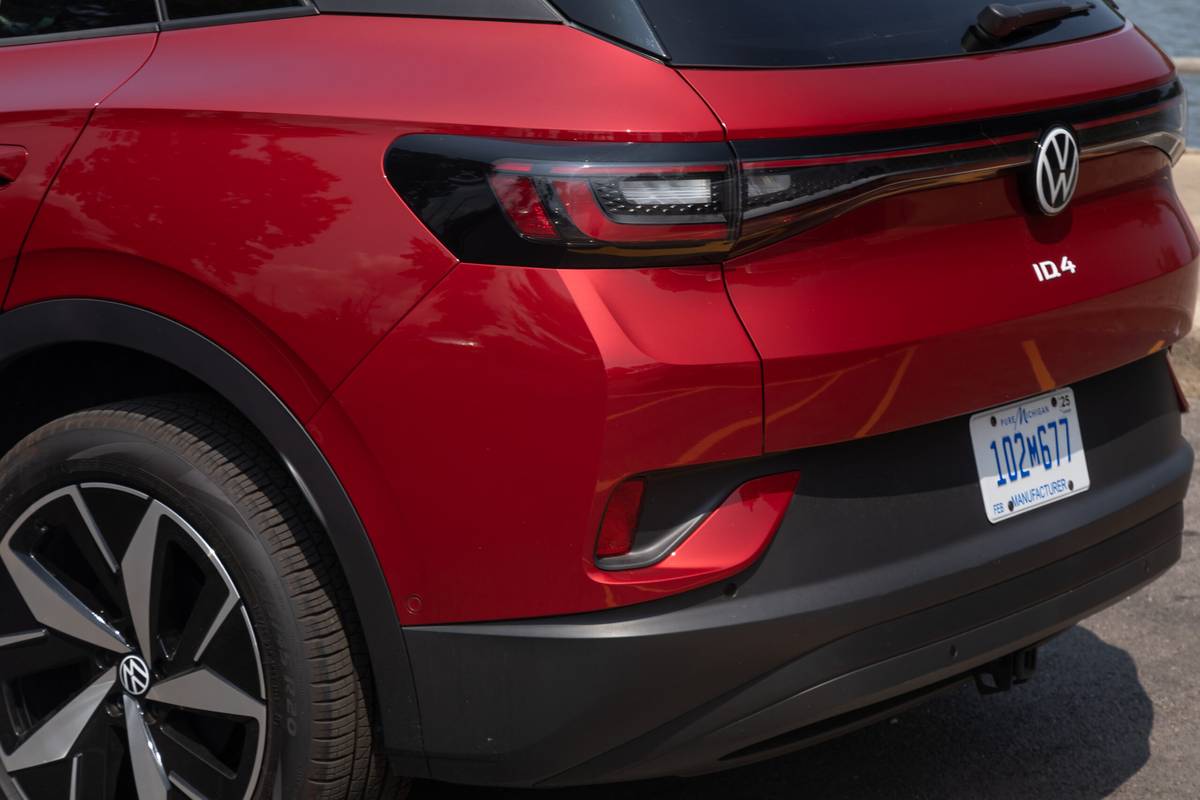

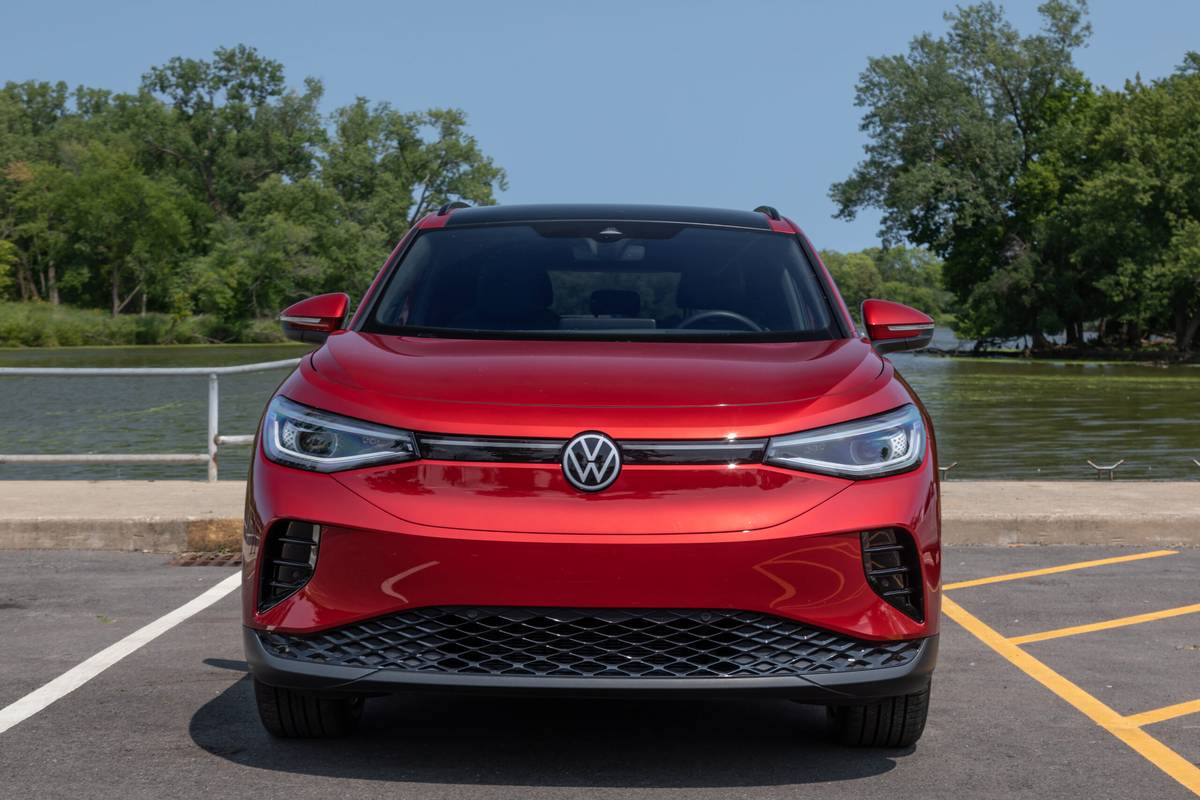
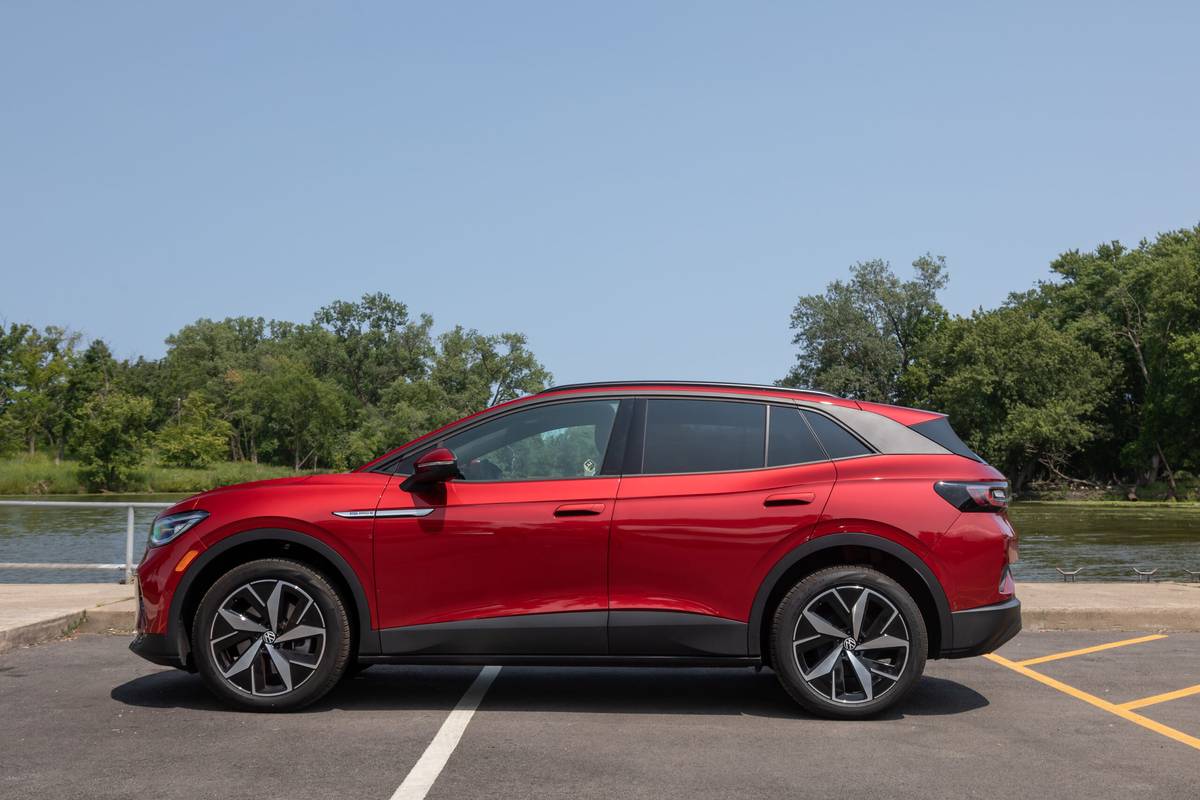








The ID.4’s dual-motor drivetrain has the type of smooth, immediate power delivery that makes many EVs fun to drive. Its performance is especially useful in urban settings, where the ID.4’s immediate torque gives it effortless and quiet acceleration in stop-and-go driving. It’s quick enough overall, with enough reserve power on the highway to quickly add speed when you need to pass.
Related Video:
Outward visibility is good thanks to thin front roof pillars, wide side mirrors and large side windows. The driver’s B-pillar does block over-the-shoulder views more than I’d like, but the ID.4 comes standard with a blind spot warning system that illuminates LEDs in the side mirror housings to warn you when other vehicles are nearby. The backup camera’s view is clear and fills the center touchscreen, giving you a great view of what’s behind you when reversing. The top Pro S Plus trim adds a 360-degree camera system.
The quietness of the ID.4’s drivetrain means other noises can easily be more prevalent in the interior, but cabin noise is well managed. There’s some tire noise on rougher highway surfaces and wind noise can intrude at times, but neither are disruptive.
The one area of the driving experience where the ID.4 stumbles is its brake-pedal feel. In Drive, the ID.4 coasts like a regular gas-powered SUV when you lift your foot off the accelerator, but when you press the brake pedal to bring the SUV to a stop, it feels numb and spongy. Pressing the brake pedal makes the electric motors act as generators in most instances, VW says, with the system adding the SUV’s friction brakes only when more stopping power is needed. Using the gear selector’s B, or Brake, mode delivers significantly more regenerative braking as you lift your foot off the accelerator and can nearly bring the SUV to a stop without touching the brake pedal. It’s not a true one-pedal driving system, though, as you do need to hit the brakes to bring the ID.4 to a complete stop.
Home Charging
All ID.4s have an onboard charger that can handle up to 11 kilowatts of power on Level 2 service. That’s about what my Wallbox Pulsar Plus charger can deliver when operating at its maximum 48 amps, and it’s about what the ID.4 accepted when I charged it for an hour on one of the hottest days of the year in Chicago.
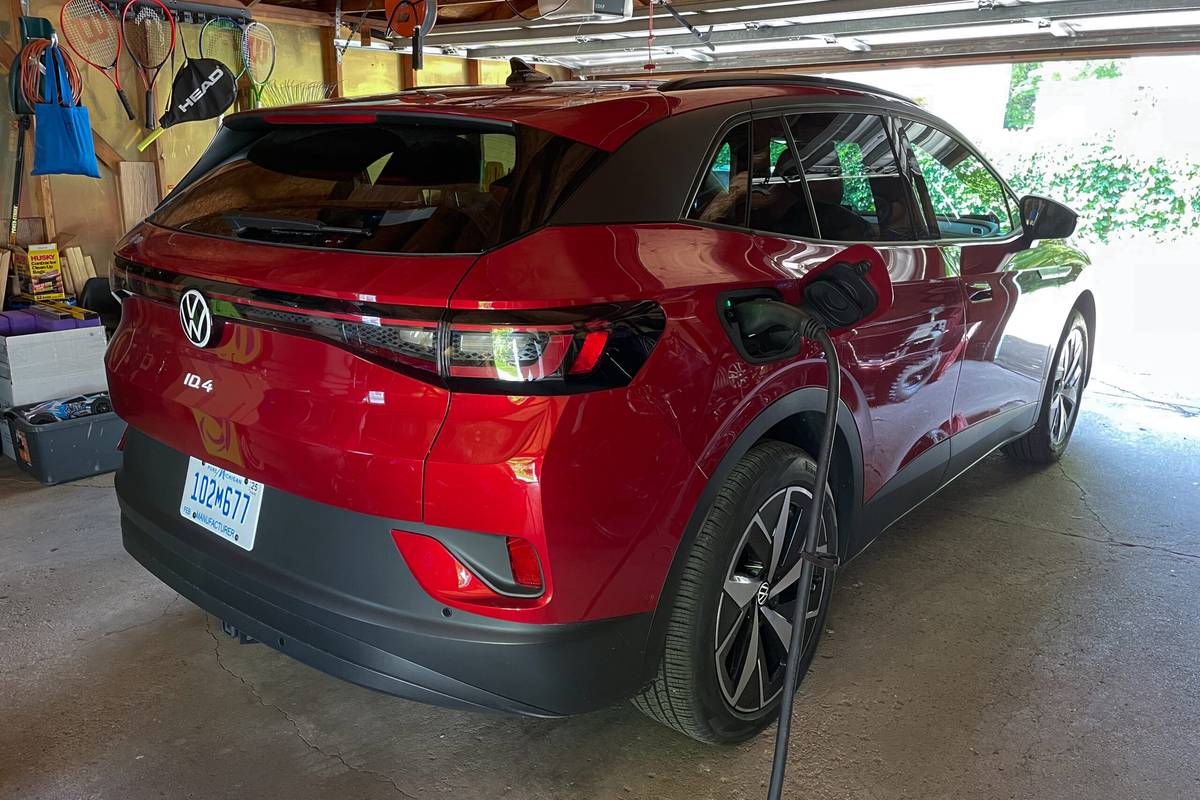
When I started the charging session, it was 92 degrees Fahrenheit outside — likely a bit warmer in my garage — and the ID.4’s battery was at 58% with 163 miles of estimated driving range. Charging the ID.4 for an hour added 10.8 kilowatt-hours of energy and 31 miles of range, bringing the SUV’s estimated range up to 194 miles and the battery to a 69% charge. After an hour, it was boiling in my garage so the ID.4’s cooling fans had kicked on, so some energy was definitely being diverted for temperature management. It’s possible it could have added a few more miles of range if it hadn’t been so hot.
The Interior
If you’re coming from a gas-powered vehicle, the ID.4’s interior will introduce you to some new ways to control your vehicle. Some are sensible and work well, but the majority of this SUV’s unique controls make it harder to use than it needs to be.
For one, the ID.4 doesn’t turn on and off with the press of the ignition button, though it does have one: You simply sit in the driver’s seat, put your foot on the brake pedal and it comes to life, much in the way a Tesla does. Shifting from Park to Drive or Reverse is accomplished by twisting a knob attached to the right side of the digital instrument panel; there are transmission position indicators next to the screen. The twist-knob selector falls to hand easily because it’s so close to the steering wheel, and its location also frees up space on the center console that goes instead to cupholders and a bin for your phone. (For 2024, the ID.4’s gear selector moves to a stalk on the steering column.)

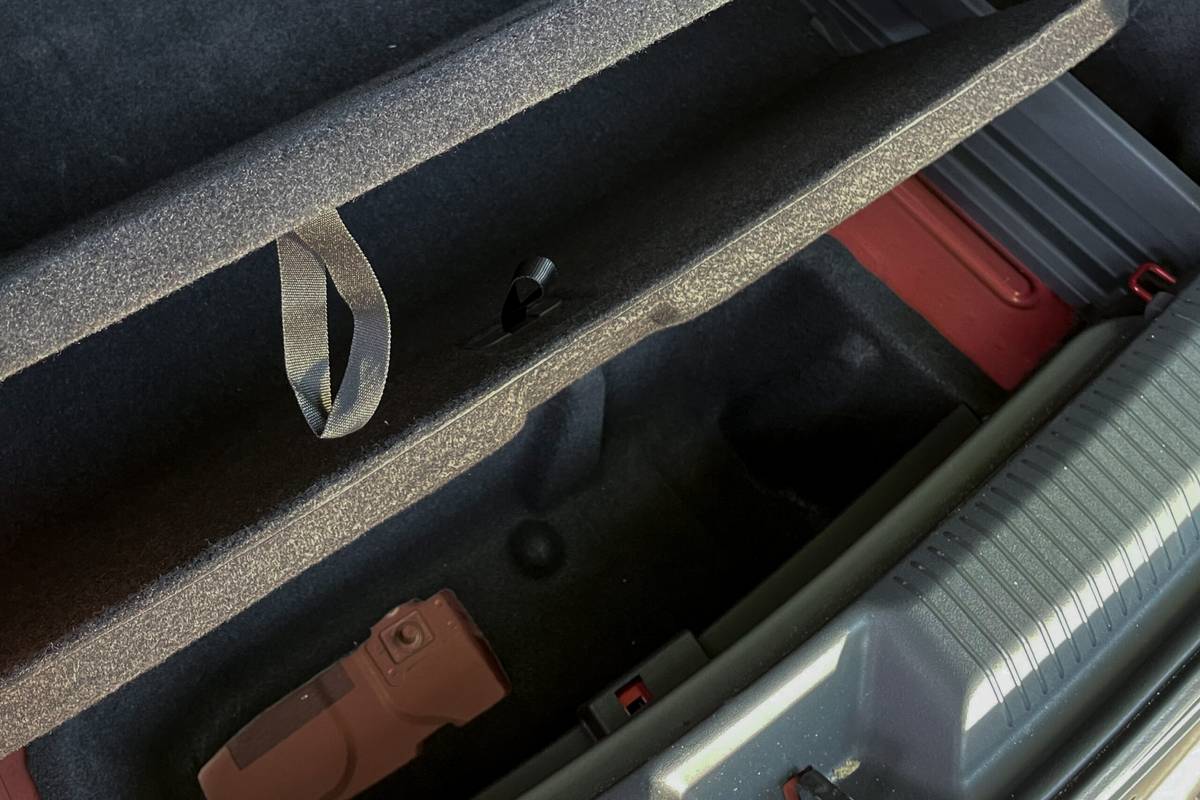
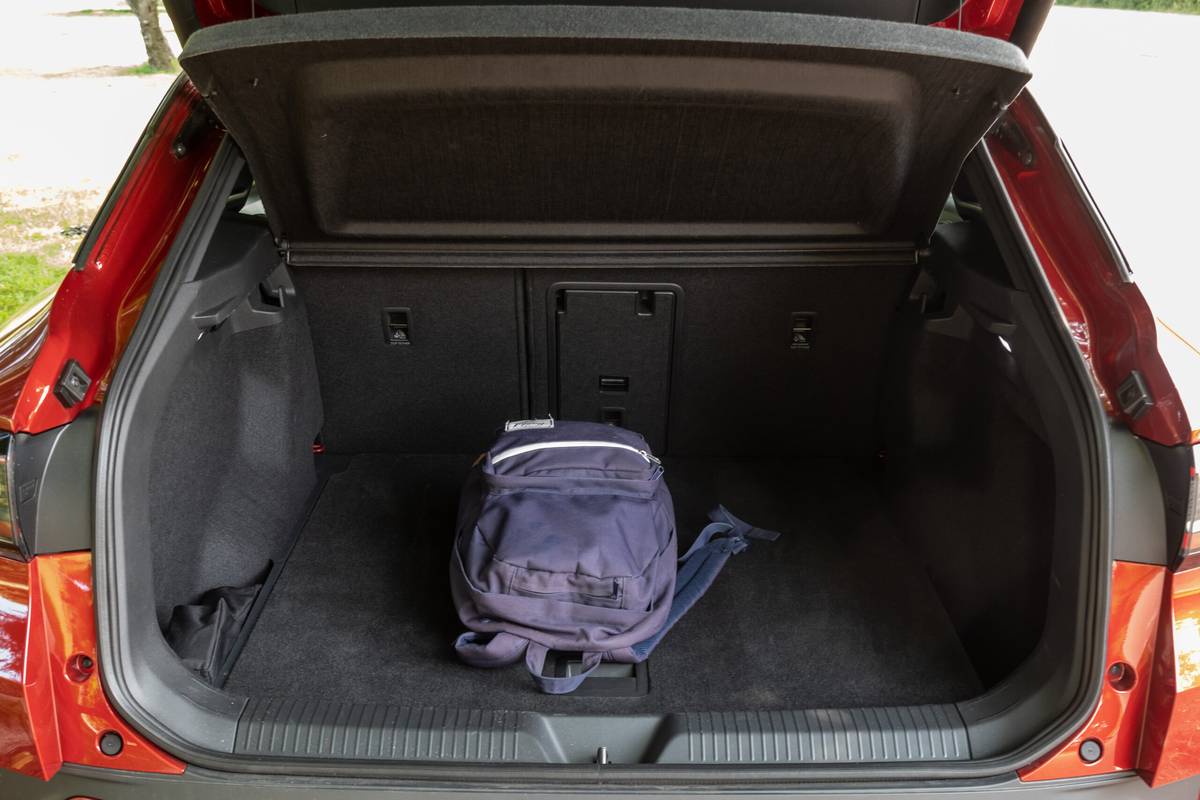

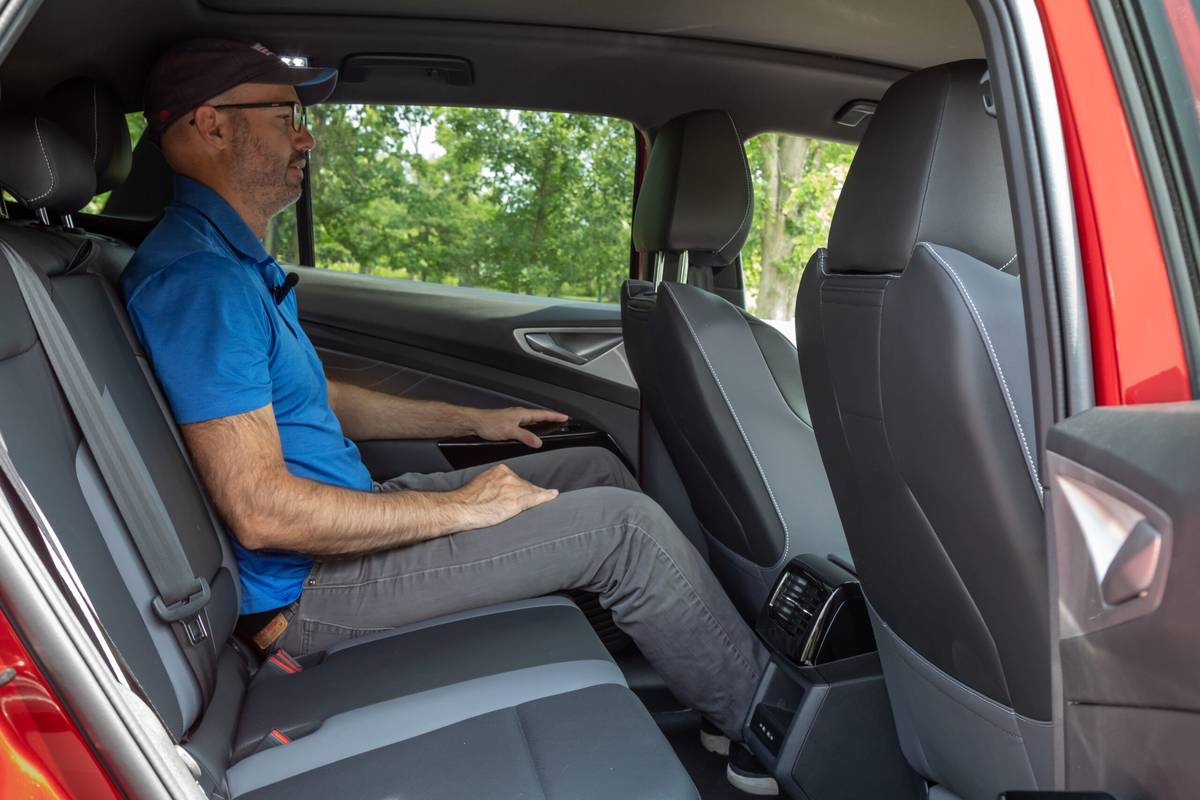
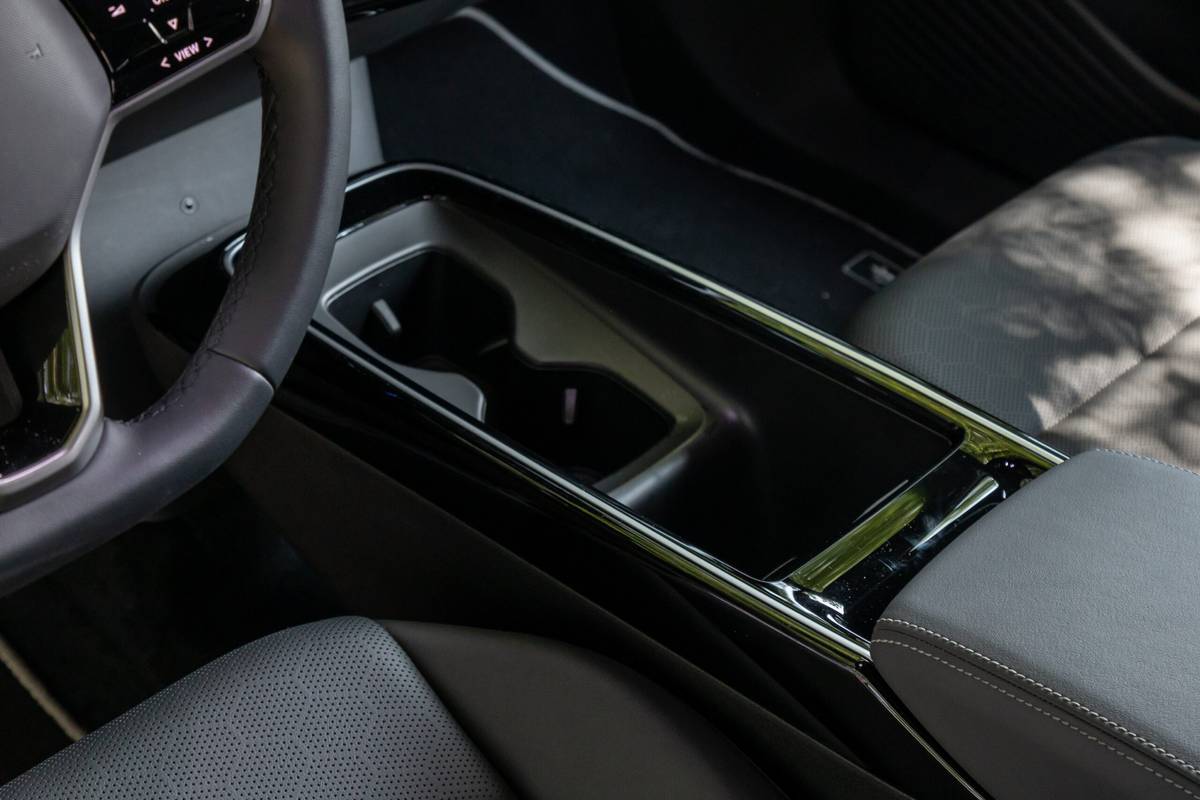
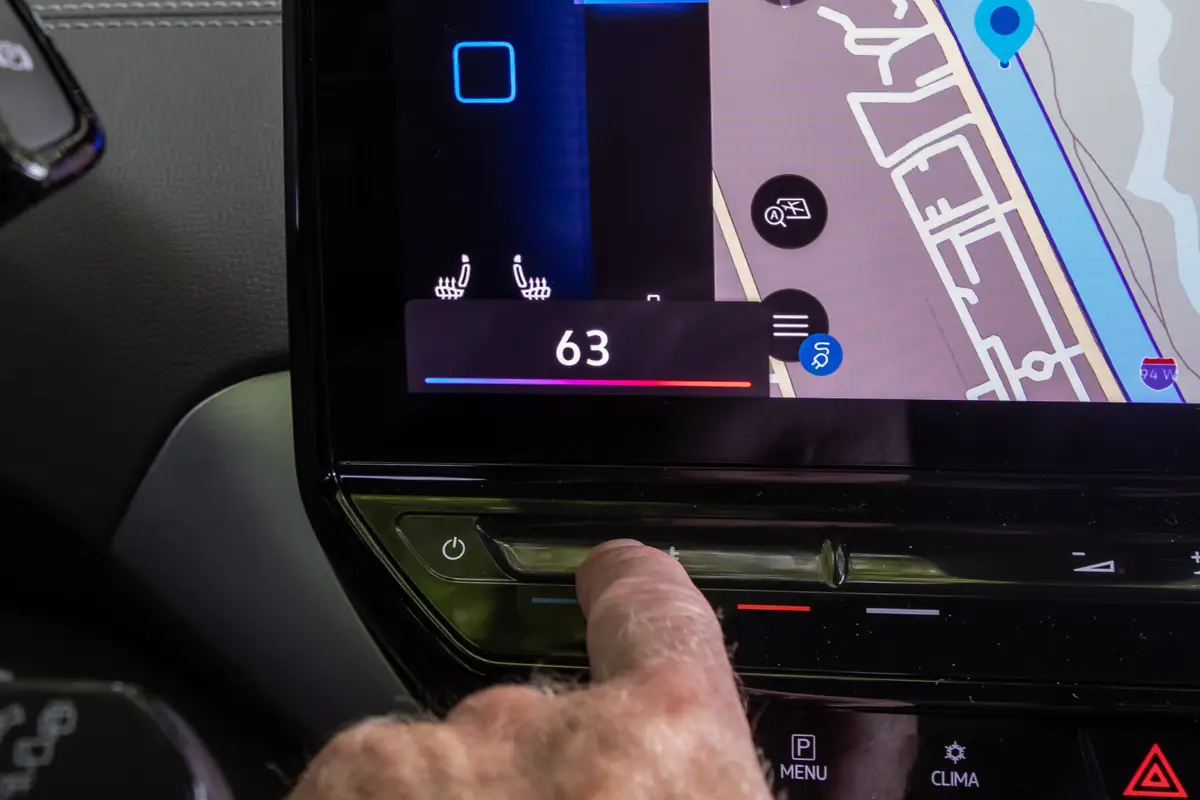

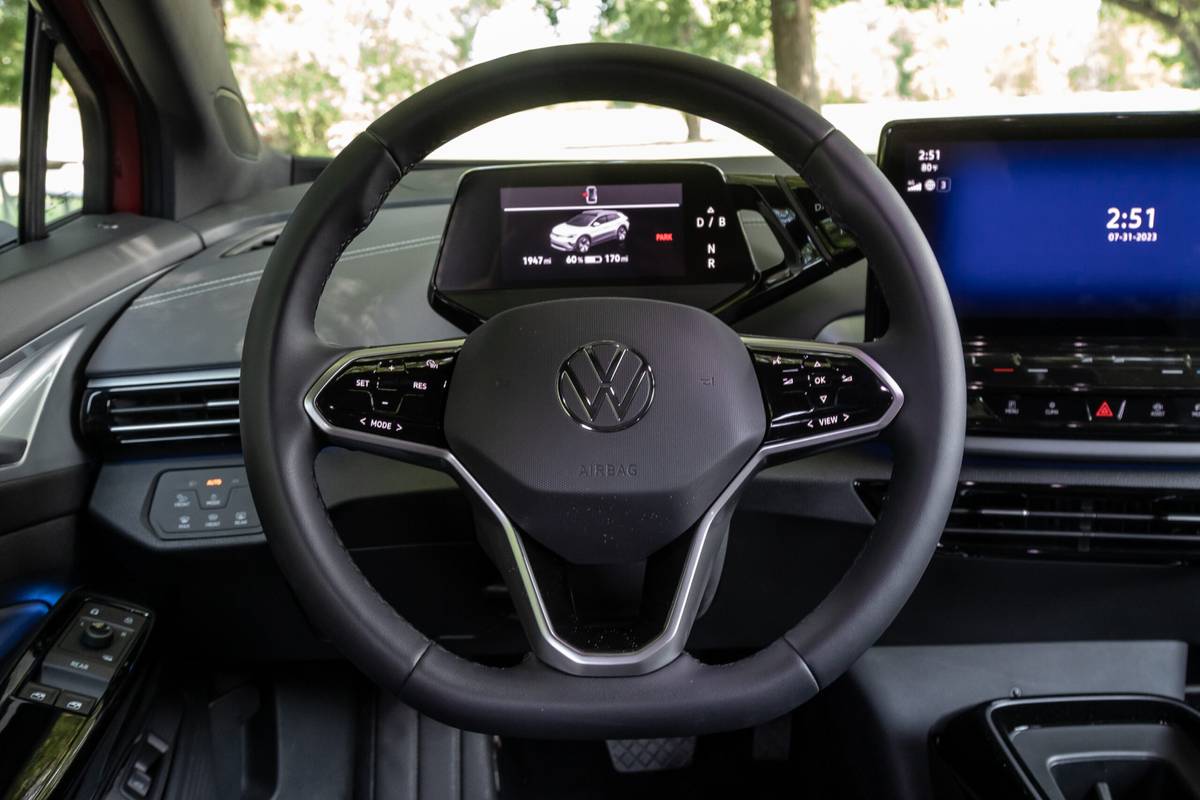
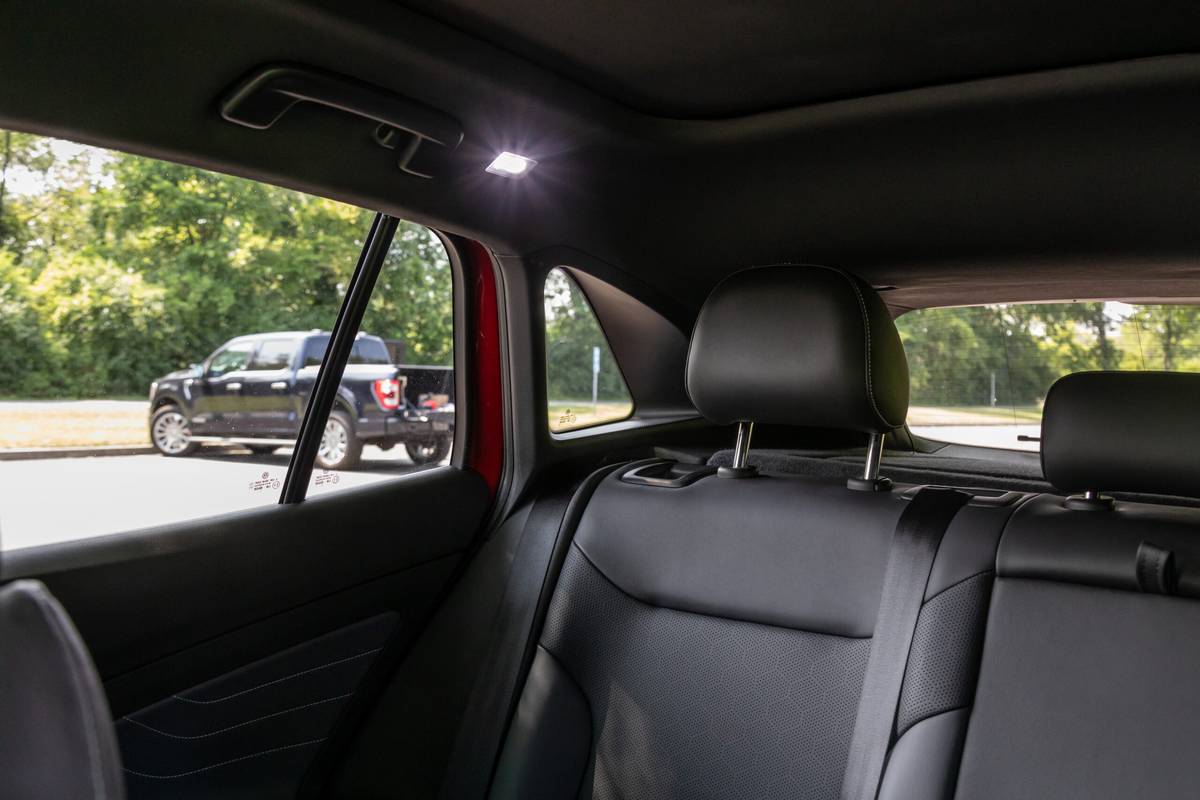
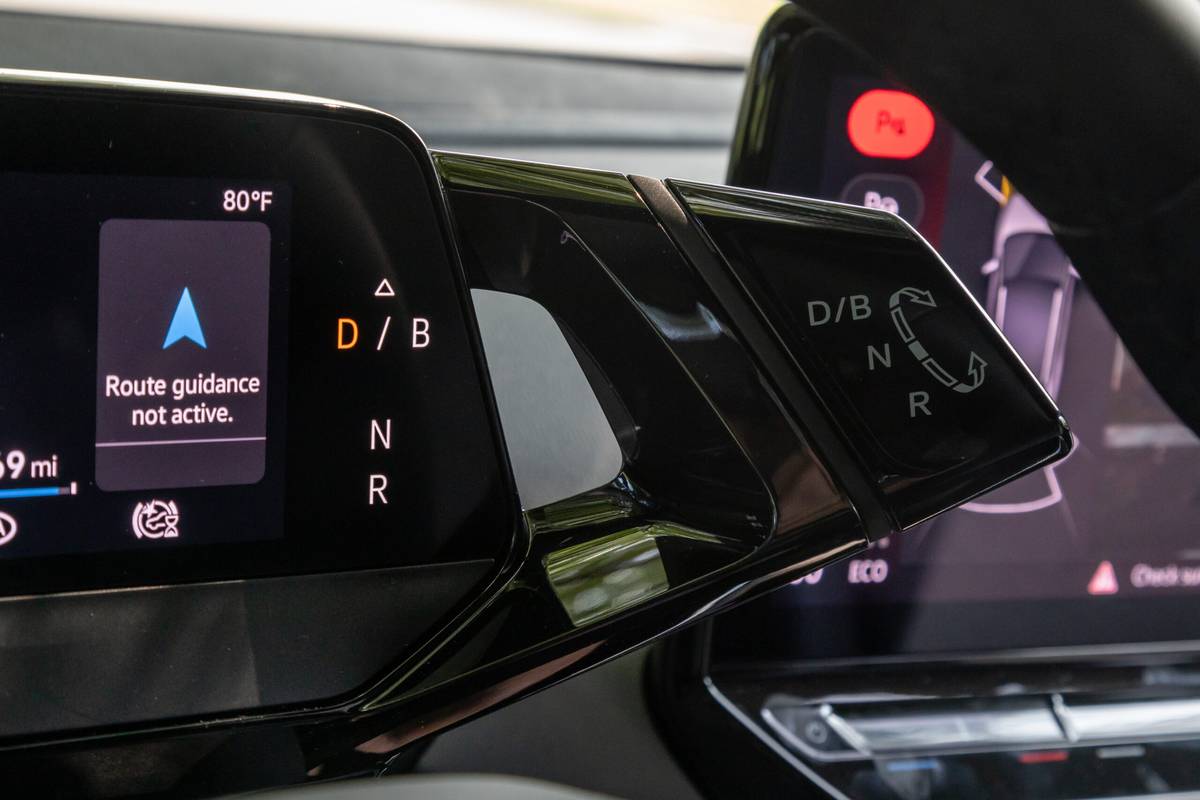
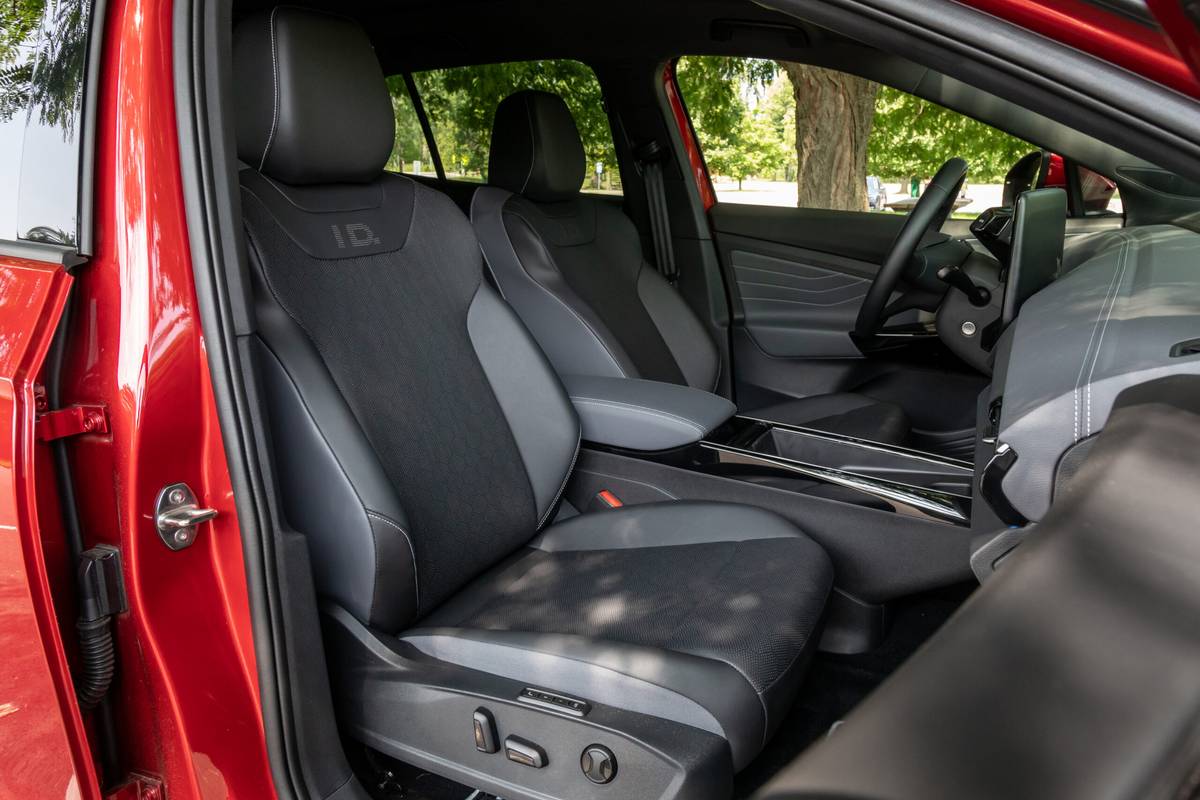
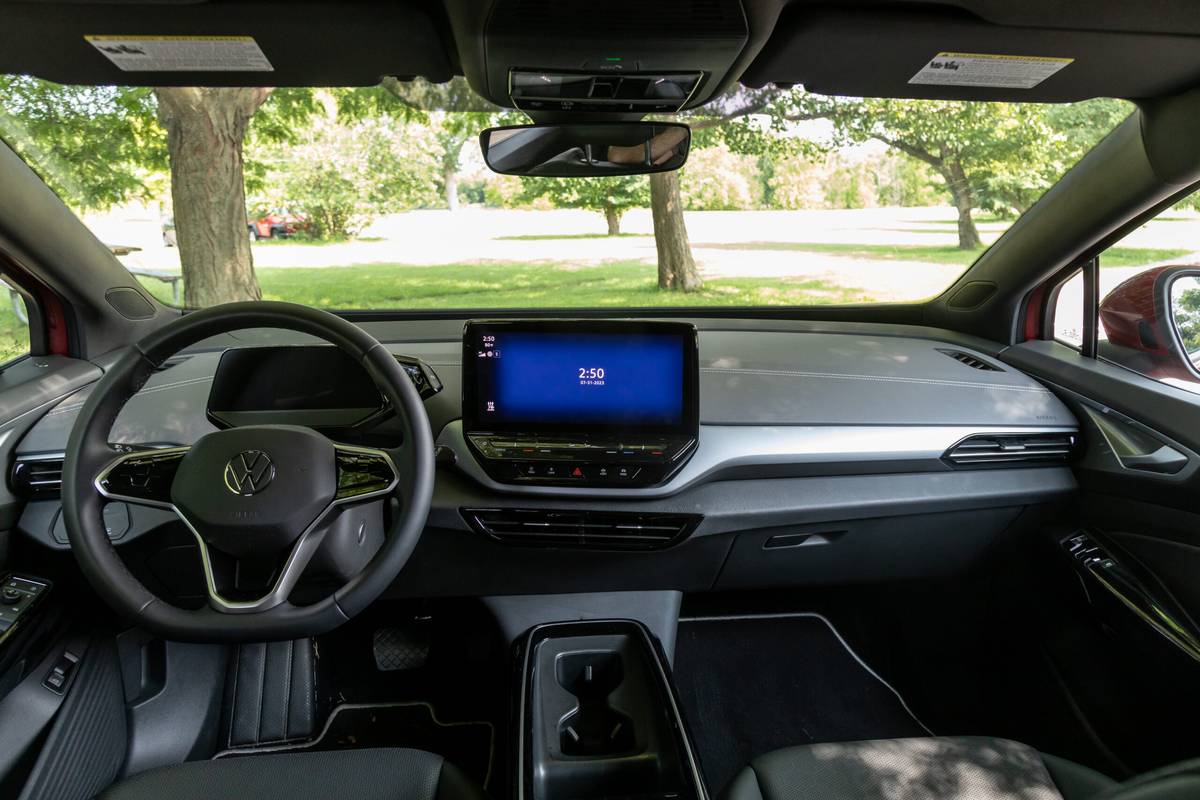













Screen technology includes a standard 5.3-inch digital instrument panel and 12-inch center touchscreen. The instrument panel screen is small by today’s standards, but its various views provide all the information you need — including navigation routing and driver-assist info — in a simple, concise layout.
The center touchscreen has good graphics and resolution, and that’s especially apparent when using wireless Apple CarPlay, which is standard (as is wireless Android Auto). The native infotainment system’s on-screen menus are reasonably easy to navigate, but dedicated volume and tuning knobs would make it easier to use. Navigation is standard, and the system includes a useful trip-planning feature for longer drives that incorporates necessary charging stops, including how long each charging stop is expected to take.

While screen-based touch controls can work well when thoughtfully designed, touch controls without a screen don’t make much sense, which is painfully obvious in the ID.4’s cabin. The temperature sliders for the dual-zone automatic air-conditioning system aren’t as easy to use as a dial or toggle switch would be (or even the redundant climate controls in the touchscreen), and the steering wheel touchpads aren’t as easy to use as are regular buttons even with their haptic feedback. There are also touch controls on the driver’s door for adjusting the side mirrors and operating the locks, and they’re no more useful than the traditional-style controls you normally see for these systems. VW skimped on separate rear window switches for the driver, instead providing a touchpad to toggle its two switches between the front and rear windows. These controls may make the ID.4’s interior look sleeker and more futuristic, but they do its usability no favors.
Comfort for adults up front and in back is good, with enough legroom for taller people to sit comfortably in the front and rear seats at the same time. Backseat legroom in particular is impressive, especially considering the ID.4’s compact exterior size. The Pro S’ seats are finished in perforated simulated leather, and while the front seats have seat heaters, ventilated seats — which are useful on hot days — aren’t available on the 2023 model. They’ll be an option on the 2024 ID.4.
More From Cars.com:
- 2023 Volkswagen ID.4 Adds Lower-Range Base Model, Starts Under $40,000
- What to Know Before Purchasing an Electric Vehicle: A Buying Guide
- Here Are the 11 Cheapest Electric Vehicles You Can Buy
- Research the 2023 Volkswagen ID.4
- Shop for a 2023 Volkswagen ID.4
Should You Buy a Volkswagen ID.4?
If you’re in the market for an electric SUV, the ID.4 has a lot going for it, like decent range with its larger 82-kWh battery pack, a comfortable ride and good interior space. For the 2024 model year, ID.4s with the 82-kWh battery will make more power, and VW says they’ll also have more range.
Regardless of whether you’re considering a 2023 or 2024 ID.4, this SUV’s biggest downfall — its use of touch controls — remains a constant. If you’re on the fence about whether this type of interface will work for you, be sure to set aside enough time at the dealership to try them out before you buy.
Cars.com’s Editorial department is your source for automotive news and reviews. In line with Cars.com’s long-standing ethics policy, editors and reviewers don’t accept gifts or free trips from automakers. The Editorial department is independent of Cars.com’s advertising, sales and sponsored content departments.

Mike Hanley has more than 20 years of experience reporting on the auto industry. His primary focus is new vehicles, and he's currently a Senior Road Test Editor overseeing expert car reviews and comparison tests. He previously managed Editorial content in the Cars.com Research section.
Latest news

